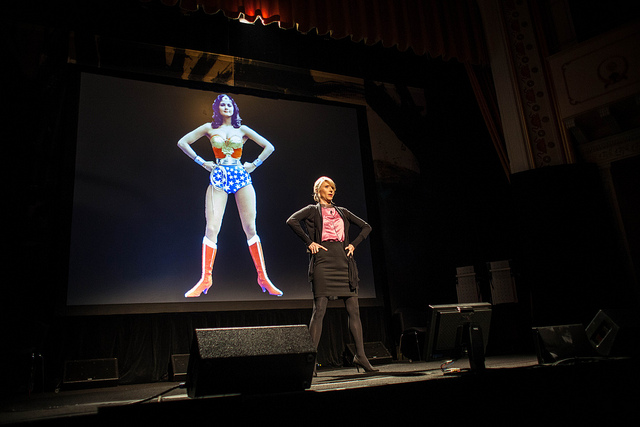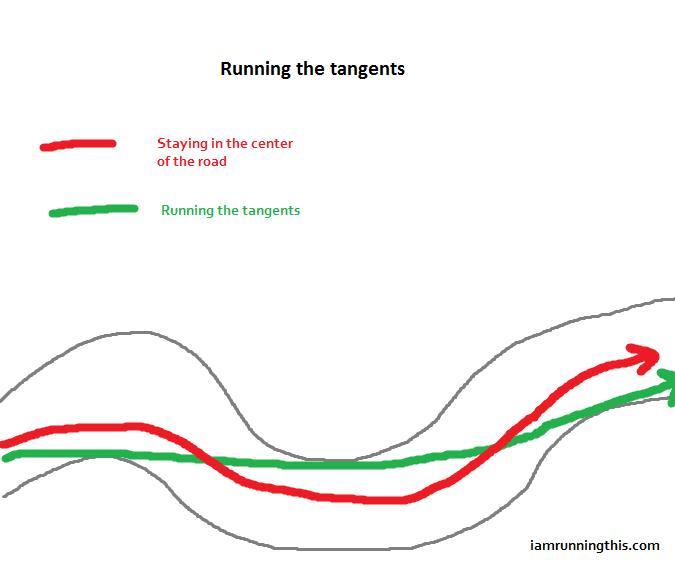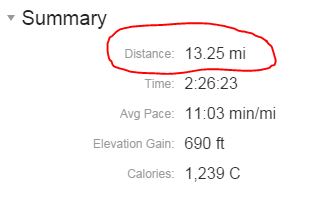
I’m always looking for running hacks – ways to improve my running that aren’t, well, running. I’ve found one I can’t wait to try.
My inspiration comes from one of the most popular TED talks of all time, social psychologist and Harvard Business School professor Amy Cuddy’s talk titled “Your Body Language Shapes Who You Are.”
Summary: Amy Cuddy is a social psychologist who is interested in non-verbal expressions of power dominance. She found that prior to a stressful event (like a job interview) people who posed for two minutes in a high power position (arms open or outstretched, taking up space, making yourself bigger) vs. a low power position (arms crossed, poor posture, making yourself smaller) had decreased levels of the stress hormone cortisol, and performed significantly better in the interview. (Start watching at 12:00 to see the recap of the experiment.)
Through her work Cuddy has discovered that “Our bodies change our minds, our minds change our behavior, our behavior changes our outcomes.” Her research demonstrates that people who adopt power poses prior to a stressful event have measurable positive chemical changes in their brains, and that these changes increase their success and how they’re perceived by others.
Later in the speech she addresses the concept of “faking it until you become it”, and accepting that you’re not FAKING it, you’re removing the inhibitions that prevented your real self, ideas, and capabilities from shining through.
THIS IS SO COOL. When we’re nervous and anxious it’s harder to put our best selves forward. Cuddy has found a life-hack that allows us to boost our chances of success just by standing with our arms outstretched in a power pose for a few minutes before we enter a rough situation.
Application: Give yourself the best chance of race day success. Step off to the side somewhere, pretend you’re doing some sort of stretching, and make yourself as big as possible. Hold your arms up and out stretched, feet wide, and lean left and right a couple times to make it look normal. Think some positive thoughts about how many miles of training you have behind you for good measure. You can also do the less obvious “wonder woman pose” where you stand with your feet spread slightly apart and your hands on your hips.
A lot of racing is mental. I know my legs can make it 13.1 miles on Sunday, I don’t know how fast my mind will encourage them to get there. Will I slow down because I feel discouraged, or will I push through? Will I confidently push the pace, believing I will still make it to the finish, or will I handicap myself out of concern? If I do start out a little too fast, will I be able to tell myself it’s all right and just slow down, or will I take it as a sign that I should give up and walk/jog to the finish? My legs didn’t feel too bad the day after my last half marathon. Physically, I didn’t push as hard as I could have, because mentally, my confidence broke at mile 7 and I just meandered towards the finish line.
So you better believe I’ll be off to the side before we start doing power poses to lower my cortisol, boost my confidence, and give my my mind the best chance of pushing my body confidently towards the finish line. After all, it’s only a two minute investment!
For a good visual, check out this blog post from the TED blog with a great chart on low power vs. high power poses.
Hope you’re enjoying the fall racing season!



